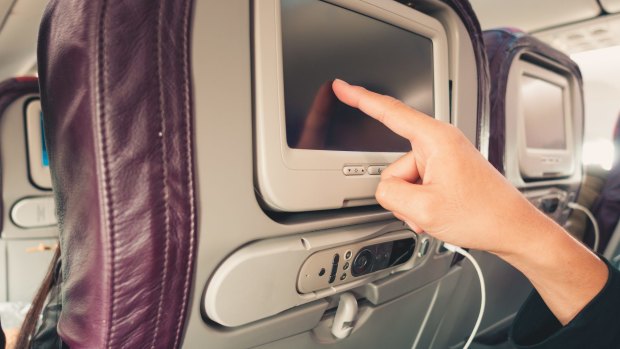This was published 4 years ago
When did airlines install seatback entertainment?
By Michael Gebicki

Seat-back screens are set to become a thing of the past.Credit: iStock
The first inflight entertainment screens appeared on the backs of airline seats in 1988 when Airvision, a subsidiary of Dutch electronics giant Philips, installed a 2.7-inch (6.9 centimetre) LCD screen.
Three years later Virgin Atlantic became the first airline to offer seat-back screens to passengers across all classes.
For the first time passengers could choose what to watch and when to watch it. Before that, inflight movies were shown on drop-down screens.
You got to see what the airline decided was appropriate, with audio via slightly weird earphones that sort of delivered sound.
If your sight-line was lousy you might get a stiff neck, or no movie at all.
However, that in itself was an improvement over the days when cabin crew would unfurl a projection screen at the front of the cabin.
From Airvision's tiny displays, seat-back screens have morphed into sizeable items. In 2012 South Korea's Asiana offered 32-inch (81cm) screens to its first-class flyers, but seat-back screens are disappearing.
They're expensive, they add weight and complexity and when most flyers have a smartphone or tablet, airlines are preferring to stream inflight entertainment via an app.
Sign up for the Traveller newsletter
The latest travel news, tips and inspiration delivered to your inbox. Sign up now.